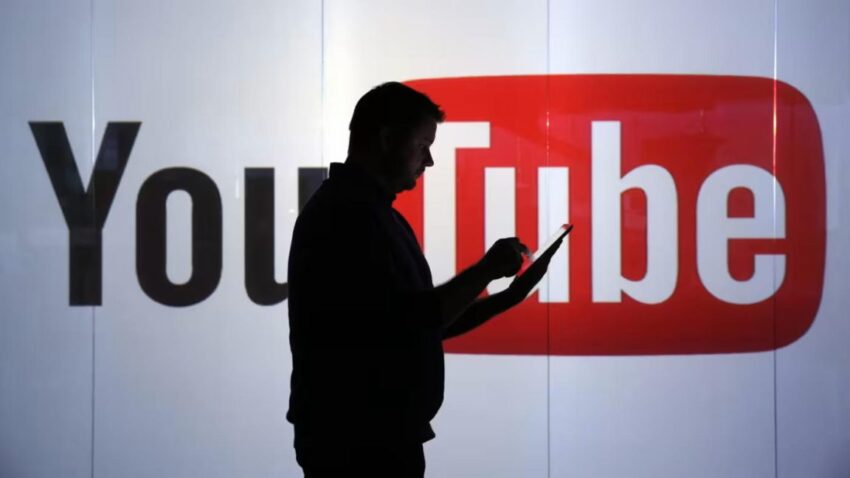
youtube s likeness detection has arrived to YouTube has introduced a new likeness detection system aimed at combating the rise of AI-generated impersonations on its platform.
youtube s likeness detection has arrived to
The Rise of AI Content
In recent years, artificial intelligence (AI) has transformed the landscape of digital content creation. Initially, AI-generated content was characterized by awkward and often humorous errors, such as distorted images with mutated hands. However, advancements in AI technology have led to the creation of increasingly sophisticated synthetic images and videos that can be nearly indistinguishable from real life. This evolution raises significant concerns, particularly for content creators and influencers who rely on their personal brand and authenticity to engage their audiences.
Google, the parent company of YouTube, has played a pivotal role in the proliferation of AI content. Its powerful and freely available AI models have enabled users to generate a wide variety of content, some of which has been used maliciously to spread misinformation or harass individuals. As a result, creators are understandably worried about the potential damage to their reputations and brands. The fear is that AI-generated videos could depict them saying or doing things they never actually did, leading to a loss of credibility and trust among their followers. This concern is not limited to individual creators; even lawmakers are beginning to express apprehension about the implications of AI-generated content on public discourse and personal privacy.
YouTube’s Response: Likeness Detection System
In response to these growing concerns, YouTube announced earlier this year that it would develop tools to help creators identify and flag AI-generated content that misappropriates their likenesses. The newly launched likeness detection system is designed to function similarly to YouTube’s existing copyright detection system, which helps identify and manage copyright infringement on the platform. The goal of the likeness detection tool is to provide creators with a means to protect their identities and maintain control over how their likenesses are used in AI-generated content.
Implementation and Rollout
The rollout of the likeness detection system has begun, expanding beyond an initial group of testers. YouTube has notified the first batch of eligible creators that they can now access this new tool. However, to utilize the likeness detection system, creators must provide Google with additional personal information. This requirement raises important questions about privacy and data security, as creators may be hesitant to share more personal details in exchange for protection against AI fakes.
How Likeness Detection Works
The likeness detection system employs advanced algorithms to analyze video content and identify instances where a creator’s likeness is used without permission. By comparing uploaded videos against a database of known likenesses, the system can flag potential violations for further review. This process aims to empower creators by giving them the ability to challenge unauthorized uses of their likenesses and take appropriate action against those who misuse their identities.
Implications for Content Creators
The introduction of the likeness detection system has significant implications for content creators on YouTube. For many, the ability to protect their likenesses from AI-generated impersonations is a welcome development. It provides a layer of security that can help mitigate the risks associated with the misuse of their identities. However, the requirement for additional personal information may deter some creators from participating in the program, particularly those who are already cautious about privacy issues.
Moreover, while the likeness detection tool represents a step forward in addressing the challenges posed by AI-generated content, it is not a comprehensive solution. The rapid pace of technological advancement means that AI-generated content will continue to evolve, potentially outpacing the capabilities of detection systems. As such, creators may need to remain vigilant and proactive in monitoring their online presence and addressing any unauthorized uses of their likenesses.
Stakeholder Reactions
The rollout of the likeness detection system has elicited a range of reactions from various stakeholders. Many content creators have expressed cautious optimism about the new tool, viewing it as a necessary measure to protect their brands and reputations. Some influencers have taken to social media to share their thoughts on the importance of safeguarding their likenesses in an era where AI-generated content is becoming increasingly prevalent.
On the other hand, there are concerns regarding the potential for misuse of the likeness detection system itself. Critics worry that the tool could be exploited to target legitimate content creators or to suppress creative expression. The balance between protecting individuals from AI impersonations and allowing for artistic freedom is a delicate one, and stakeholders are keenly aware of the need for clear guidelines and policies surrounding the use of the likeness detection system.
The Broader Context of AI and Content Creation
The introduction of the likeness detection system comes at a time when the broader conversation about AI and content creation is intensifying. As AI technologies continue to advance, they raise fundamental questions about authorship, ownership, and the ethical implications of synthetic media. The potential for AI-generated content to mislead audiences or distort reality has prompted calls for greater regulation and oversight in the digital space.
Lawmakers and regulatory bodies are increasingly scrutinizing the impact of AI on society, particularly in areas such as misinformation, privacy, and intellectual property. The rise of deepfakes and other forms of AI-generated content has led to discussions about the need for legal frameworks that can effectively address the challenges posed by these technologies. As YouTube implements its likeness detection system, it may serve as a case study for how platforms can navigate the complexities of AI content and its implications for creators and consumers alike.
Looking Ahead: Future Developments
As the landscape of AI-generated content continues to evolve, YouTube’s likeness detection system is likely to undergo further refinements and enhancements. The platform’s commitment to addressing the challenges posed by AI content reflects a broader recognition of the need for responsible AI practices in the digital space. Moving forward, it will be essential for YouTube and other platforms to remain agile and responsive to the changing dynamics of AI technology.
In addition to improving the likeness detection system, YouTube may explore additional measures to support creators in navigating the complexities of AI-generated content. This could include educational resources, community guidelines, and partnerships with organizations focused on digital ethics and responsible AI use. By fostering a collaborative environment, YouTube can empower creators to engage with AI technologies in a way that enhances their work while minimizing potential risks.
Conclusion
The introduction of YouTube’s likeness detection system marks a significant step in the ongoing battle against AI-generated impersonations. While it offers creators a valuable tool for protecting their identities, it also raises important questions about privacy, data security, and the broader implications of AI in content creation. As the digital landscape continues to evolve, it will be crucial for platforms like YouTube to strike a balance between innovation and responsibility, ensuring that creators can thrive in an increasingly complex environment.
Source: Original report
Was this helpful?
Last Modified: October 22, 2025 at 1:38 am
1 views















